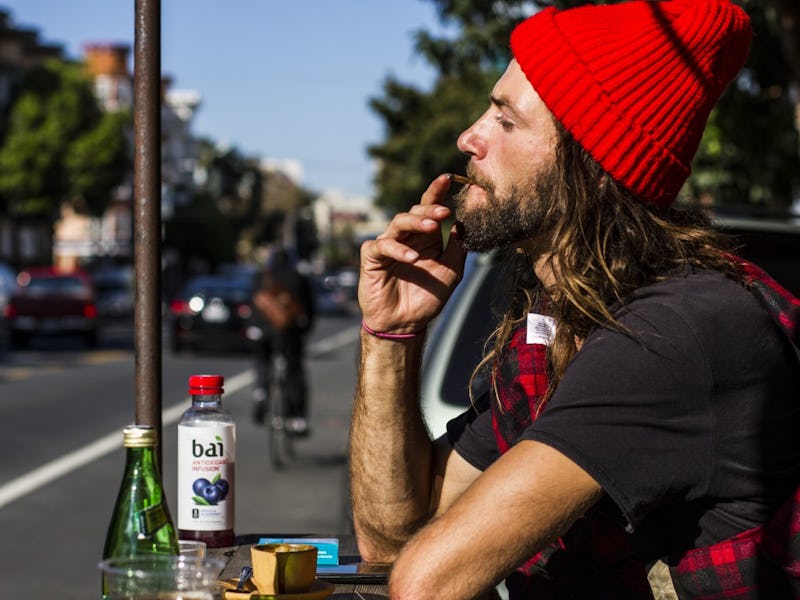Unprotected Teen Sex Linked to Marijuana in Study, But Some Are Skeptical
Marijuana makes people 'more cautious or even paranoid in sexual situations.'

A study published Wednesday in The American Journal on Addiction warns that drinking alcohol and smoking marijuana may lead to more unprotected sex – especially for women. This research comes on the heels of the CDC’s most recent Youth Risk Behavior Survey, which reported a 9 percent decline in condom use among teens since 2005, hinting at a link between “dual use” — that’s drinking and smoking weed — and unprotected sex. But there’s no need to descend into a cross-fade-induced morality crisis just yet. Some experts advise that this research still has a ways to go.
In the study, carried out by a team led by Holy Cross University psychology professor Jumi Hayki, Ph.D., 290 people aged 18 to 25 were asked to recall their use of condoms, alcohol, and marijuana over the 90-day period preceding the study. Using the data, the team calculated that the estimated risk of unprotected sex for males increased by a factor of 1.71 on “dual use” days. But for females, the risk of unprotected sex increased by a factor of 3.39 on “dual use” days. The researchers conclude: “[Young] women may be especially susceptible to the influence of alcohol and/or marijuana use on sexual behavior.” But Joseph Palamar, Ph.D., an associate professor of population health at New York University, believes that drawing a correlation between dual use and unprotected sex is premature, given this data.
“We don’t truly know if these people were drunk or high during the sexual interaction,” Palamar, whose previous work has suggested that it’s the illegality, not chemical makeup, of marijuana that’s a turn-on, tells Inverse. Palamar raises an important point: Just because someone reported smoking or drinking and having unprotected sex on the same day does not imply that the activities happened in succession or that the person was necessarily intoxicated.
The TL;DR of the CDC's 2017 Youth Risk Behavior Survey
His previous research showed a relationship between alcohol or ecstasy and heightened “perceived sexual effect” — for example, sexual desire. But he maintains this has less to do with any libido-boosting effect of either drug and more to do with the fact that the study participants were more likely to encounter more potential partners when on those drugs. “People are much more likely to lose their social and sexual inhibitions on alcohol compared to marijuana,” Palamar said. “People high on marijuana actually tend to become more cautious or even paranoid in sexual situations.”
That said, many of the factors that might lead someone to have unprotected sex are too complex to consider in a single self-reported study. In research like this, it’s important to consider the relationship status of study participants, Palamar warns, because sex with a monogamous partner presents less of a risk factor than random sex with a stranger.
Given these shortcomings, this paper is remarkably self-aware in the introduction. The team admits freely that there is conflicting research when it comes to the effects of drugs and alcohol on sexual behaviors. As the trends in drinking, drug use, and “sexual effect” change and more studies are done, perhaps a consensus will start to form. For now, the jury is still out, but one thing remains certain: using a condom is still a good idea.